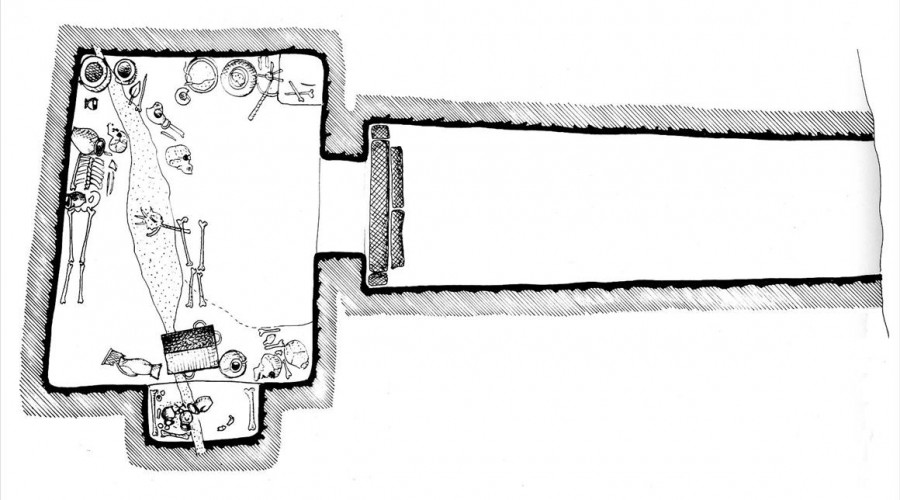Crete Senesi
Necropoli Etrusca di Poggio Pinci: Tomba III
ASCIANO
Subrettangolare plan room, with entrance passage open to the south. northeast corner of the right wall, is the start time of the plume, about 1 meter from the floor.
Dromos sloping slightly towards the inside initially closed by two slabs of travertine.
Measurements of the dromos: length 4.80 meters, width varying between 1.23 and 1.75 meters.
Measurements of cell length 1.45 m, width 2.90 m, height 2.40 meters.
Gateway to 0.95 meters wide.
In the room were found two skeletons, one in the middle and the other two up against the wall, both oriented in the east-west, head east.
The objects found, dating from the second half of the fourth century BC, are:
- kelebai three,
- stramos a red-figure factory Volterra
- a kylix overpainted Workshop Siena,
- kylikes three black painted end of the fourth century,
- an ointment painted red
The other found materials, all belong to the first half of the third century and consist of black-painted artifacts, plus a plate presigillata Volterra.
The tomb was built in the second half of the fourth century and used until the middle of the third.
Subrettangolare plan room, with entrance passage open to the south. northeast corner of the right wall, is the start time of the plume, about 1 meter from the floor.
Dromos sloping slightly towards the inside initially closed by two slabs of travertine.
Measurements of the dromos: length 4.80 meters, width varying between 1.23 and 1.75 meters.
Measurements of cell length 1.45 m, width 2.90 m, height 2.40 meters.
Gateway to 0.95 meters wide.
In the room were found two skeletons, one in the middle and the other two up against the wall, both oriented in the east-west, head east.
The objects found, dating from the second half of the fourth century BC, are:
- kelebai three,
- stramos a red-figure factory Volterra
- a kylix overpainted Workshop Siena,
- kylikes three black painted end of the fourth century,
- an ointment painted red
The other found materials, all belong to the first half of the third century and consist of black-painted artifacts, plus a plate presigillata Volterra.
The tomb was built in the second half of the fourth century and used until the middle of the third.